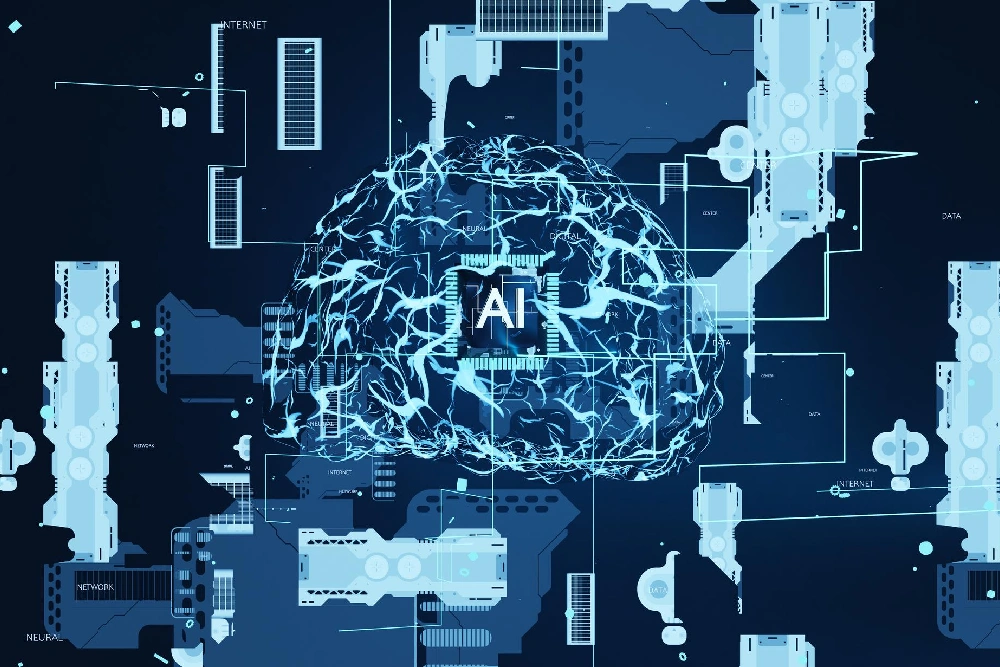
In recent years, offshore development centers (ODCs) have evolved into a cornerstone for companies with an eye on cost-effective, quality software development. Historically, traditional outsourcing has focused mainly on cost savings, whilst ODCs are offering so much more today. These are evolving into innovation hubs with cutting edge techs like artificial intelligence (AI) and machines (ML) leading the way in advancing this industry.
AI & ML: the New Backbone of Offshore Development Centers
ODCs have consistently provided robust technical solutions, but with the integration of AI and ML, everything that these centers do is changing. In short, these technologies are not just making things more efficient—they are opening up brand new opportunities to the point where you can streamline your entire workflow and provide even more value to clients.
In this article, we explore AI/ML-enabled ODCs beyond the traditional stories around cost savings and operational efficiency.
1. Boosting Productivity Through Automation
One of the most direct benefits to be enjoyed from AI and ML in offshore outsourcing is productivity improvement through automation. According to a report from McKinsey Global Institute, by 2030 AI will be able to automate as much as 30% of the work hours of the current workforce!
Another survey reveals that it takes almost two hours (i.e.19%) of an employee’s day is spent on routine tasks. This underscores the need for AI-powered tools to improve productivity. 42%, for example, saw productivity improve by an average of 30% when they augmented daily tasks with AI-powered virtual assistants. Now, whether it be automating the code generation, improving quality assurance or simply optimizing project management, AI-based tools are making ODCs cut down on man-hours spent in manual legwork and thus up the productivity in every area.
2. Enhancing Software Quality with Predictive Analytics
The quality of software is critical for software developers and compromising that would arguably make development cease to exist. By implementing predictive analytics, AI and ML are allowing processes such as quality assurance (QA) to automatically detect potential problems, thereby identifying bugs or errors in early stages of the development cycle. Such smart systems can create patterns from past projects data to visualize which areas are more prone to face problems.
ODCs can easily identify the weak points prior to actual coding, hence reducing the time for debugging/rework and ultimately produce better quality software. It translates to quicker delivery cycles and less post-launch pain for clients, so even more smiles all around.
For instance, AI-powered solutions tend to examine and anticipate the code structures live — giving hints on improvements during the writing of the code. This not only improves the code quality, but also reduces the turnaround time by allowing teams to concentrate on high-value tasks rather than routine bug fixes. AI-driven project management platforms that predict bottlenecks in workflows, are continuing to evolve as well. This allows teams to pivot quickly, and help saving time and resources.
3. Using AI-Powered Solutions to Drive Innovation
ODCs are not only using AI internally, but also producing and delivering AI driven products and services for their clients. Using AI chatbots and ML driven insights, agents within these centers can create unique solutions to solve for specific business challenges (whether it be in supply chain optimization, customer experience or decision making with data) that is particular to an organization.
A multinational company, for instance, could partner with an ODC to create AI models that forecast market movement or analyse customer behavior on-the-fly. ODCs are no longer just another back-office service provider, thanks to pioneering robotics and other AI powered solutions that not only assist in keeping clients competitive but also help create brand new revenue streams.
4. Providing Customized Solutions, At Scale
Among other things, AI and ML offer the ability to give customized solutions in a massive volume when it comes to offshore development. They help ODCs to search through large datasets using AI algorithms and gain insights which can be used in order to personalize software solutions for each individual customer.
AI-driven platforms can examine the client data and offer tailored functionalities that are not included in the original project scope (to take one example). A personalized approach guarantees the end result is more in sync with the goals of the business for which an ODC can turn into a valuable partner to fuel its growth over time.
5. Providing Value-Added Services
AI and ML capabilities allow ODCs to provide services beyond regular development tasks. AI-driven analytics enables ODCs to deliver business insights, risk assessments and performance improvement.
Offshore teams can then leverage ML models to predict future market disruptions or customer churn and further enhance strategic decision making by clients. This allows ODCs to really step up as strategic advisors who are in it for the long haul unlike just technology vendors.
The Future of AI in Offshore Development
As AI continued to mature, the role it will play in offshore development will only increase further. Customers today are not only outsourcing their tasks anymore, but they are also looking for partners to bring innovation and add value in real-time business deliverables using the latest technologies.
Furthermore, a teamstage survey shows that more than 84% of offshore projects were coming from the USA and creating 14.3 million offshoring jobs. The World Economic Forum predicts that AI will create 97 million new jobs globally by 2024, with offshore AI companies at the forefront going beyond just tech development and building a future-ready workforce.
And with the progress of AI and ML, we can bet on offshore development centers to improve their capabilities in a much smarter, quicker, and scalable fashion. This change is heralding a new order of offshore development, one in which innovation, efficiency and customer satisfaction take precedence.
